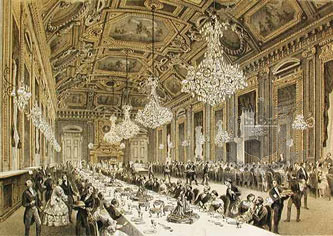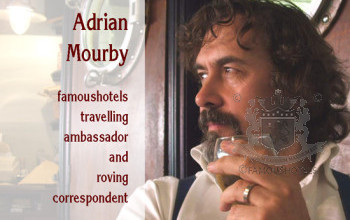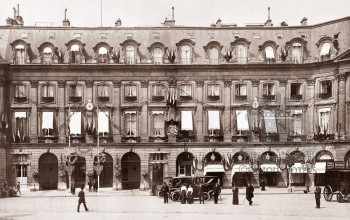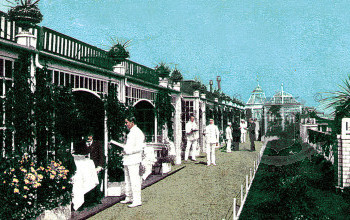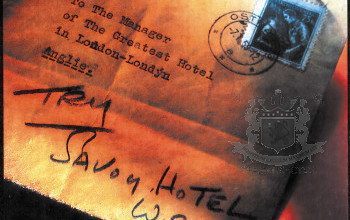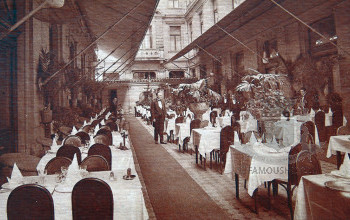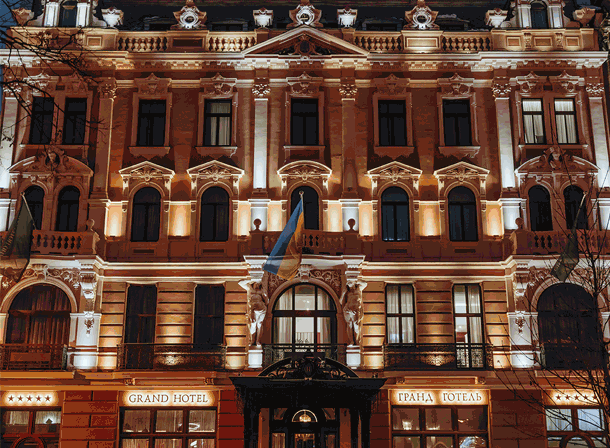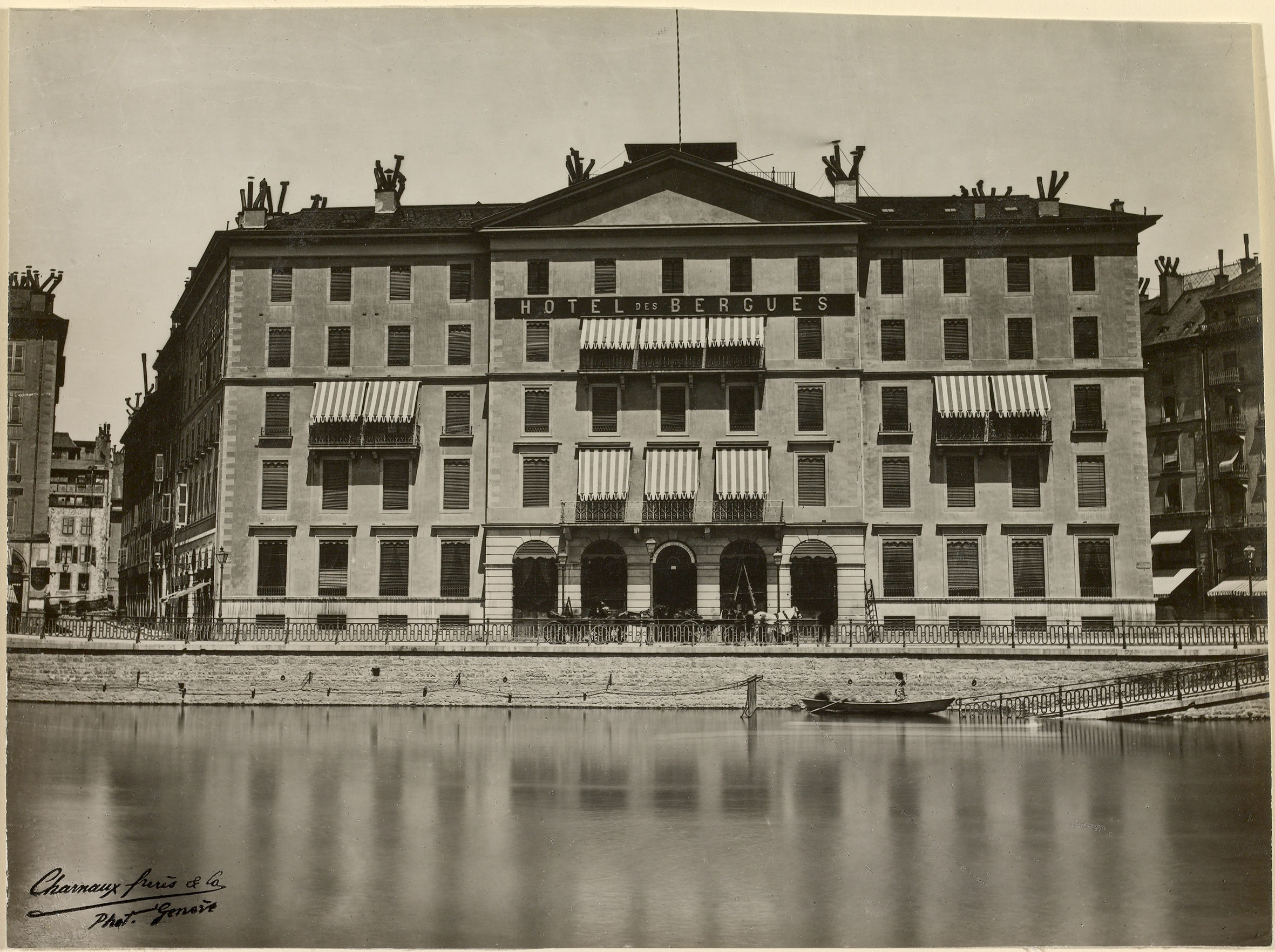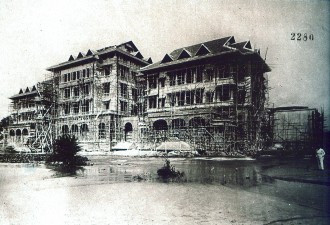This Concept called ‘Grand Hotel’
( words)
By Andreas Augustin
Hospitality is a global desire to accommodate guests. It first developed on a private non-profit base, later as a business. Its history goes back to ancient rituals. In classic Greece, the term Xenia stood for 'guest-friendship', creating a reciprocal relationship between guest and host – both parties were giving and taking. It was gifts in exchange for protection and shelter. The standard of accommodation was no subject. That clearly changed over the time, responding to changing requirements. High expectations were often met by bitter reality, resulting in disappointment and an openly expressed demand for higher standards. Inns, guest houses, hostels, and finally hotels, developed.
The great advantage of a hotel is that it’s a refuge from home life." G B Shaw
The 'grand hotel' is the brainchild of European culture. It came into being in the mid 19th century and grew into a perfect amalgamation of related, albeit very different services, all under one roof: accommodation, a place to eat, a stage for social activities of all sorts, the merits of a personal home and in sharp contrast, the anonymity of a building comprising sometimes hundreds of rooms. All this came with personal service, laundry, cleaning and communication facilities. Horses were stabled, and – later – cars parked.
The greatest achievement of the Grand Hotel in gaping social corridors is certainly the fact, that – under one roof – you find totally different people of varied social, religious, political, ethnic and wealth-related backgrounds. It is a sort of Garden of Eden, where all people live together in peace and harmony. Often, and for that reason, grand hotels are also considered the most democratic institutions of a sort.
The Name 'Grand Hotel'
The name, however, was coined even earlier (although without a lasting effect). In January 1774, David Low opened the first so-called 'Grand Hotel' in London. At least the name was used for the first time. The first true grand hotels of Europe did not open before the arrival of the railway and – with it – masses of travellers at the same time, when the concept of the grand hotel in the heart of a city became a necessity.
The Concept 'Grand Hotel'
Let’s look at the term ‘Grand’ hotel as a concept. We are leaning towards the theory that the word ‘grand’ in Grand Hotel is derived from the expression 'grandeur' rather than from grand in size. It was developed and expanded in Europe, and spread all over the world. It should not be confused with the American ‘grand’ hotel (in size), offering some 1,000 rooms, all of them of certain standards, in general lacking grandeur. So, in fact, you could have a small hotel of 50 rooms, being a 'grand' hotel, while the 500 rooms hotel block next door would probably fail to claim this attribute for itself.
The concept to operate a grand hotel was developed and refined in Europe by the greatest masters of the trade. They added a personal touch to services, which was to become their trademark. During the period of 1840–1900 they opened in the hearts of European cities, catering for the rising number of railway travellers. In Africa and Asia they became the watering holes along the main shipping routes, in America along the railroads. Charles Dickens, the great English writer and traveller, complained about the American grand hotels. Mark Twain, the great American writer and traveller, praised European grand hotels.
While European hotels mostly grew within the given and limited spaces of historic cities, the American hotel often became part of generous layouts of new towns. Only after 1850, with the revamp, modernisation and expansion of cities like Vienna, Paris and Frankfurt, allocated spaces for these types of commercial buildings could be found in the drawings of the city’s master planners. The Frankfurter Hof for example, in the city of Frankfurt, Germany, was built on a piecde of land allocated by the city planners, marked "Hotel".
The new hoteliers of that time quickly amalgamated the term grand and big and offered grandeur in big-by-numbers style. In 1870 the Grand Hotel was established in Vienna, Austria. It had 300 similar rooms. Most important were the steam elevators which served the upper floors. Thus, the innkeeper turned hotelier could sell theses rooms under the roof at the same rate as the rooms on the lower floors. A first in this respect.
This concept of a Grand Hotel set an unrivalled precedent around the world. The idea was new, indeed:
• channel all arriving travellers into one system of equal accommodation,
• actively serve guests rather than merely accept them,
• offer facilities creating ‘a home away from home’.
All this led to the first competition among the new profession of hoteliers, the former innkeeper. Until today, hoteliers in all continents ponder opportunities to improve it.
Between 1850 and 1920 grand hotels had risen all over the continent, giving every city of note a variety of individual hotels. By 1920, America boasted over 200 notable hotels, following European standards.
While these hotels were a reflection of a European nobleman’s home, hotels in Africa and Asia rarely reflected the style of local nobility, but rather satisfied the demand of (colonial) travellers, thus creating a ‘European’ home, later an ‘American’ standard for travellers, who were far from home.
The Residence
Rooms were not only rented out on a daily basis. Arrangements for long-term stays were a common affair. Certain guests even used hotels as their home. It was a most convenient solution, given all the amenities at hands, from domestic staff to the range of facilities. So, in many cases, hotels became permanent addresses.
We know of artists who had made the Chelsea Hotel in New York their residence. The hotel was so full of them that at times we had reasons to believe that this hotel never accommodated any ordinary traveller.
Salvadore Dali made Le Meurice in Paris his home and Oscar Wilde called London's Cadogan his home, until he, the homosexual, had to flee England from the guardians of morality. He moved to Paris, where he died, at L'Hôtel. His last words, at least attributed, were: ‘I hate this wallpaper. One of us has to go.’
Charges and Reservations
Room rates were – in comparison to today – equal. The rule of the thumb is the same as we have it now: a luxurious hotel room costs per night as much as an apartment of the same size would cost you in the same city per month. But watch it! Then, rates didn’t include today’s services. All extras were, as the name suggests, ‘extra’. Before 1900, you could find candles to light your room and wood for the log-fire separately on the bill, as well as the porter’s modest fee for transporting your luggage upstairs.
On the subject of ‘upstairs’: as I explained at the Grand Hotel in Vienna in 1870: with the advent of the (steam-) elevator in the mid-19th century, higher floors suddenly became profitable. Until then, rooms up there could not be rented at the same rate as the lower floors.
Reservations were made by mail, sometimes long before arrival. The ‘List of Arrivals’ was published in the daily papers, so everybody in the city knew exactly who had taken up residence in a hotel! This provided the opportunity, perhaps a business opportunity, to contact these travellers. It also ensured local society had an updated ‘Who’s Who’ at which hotel arriving guests were staying.
In the days of the telegraph, reservations came in by cable, often coded following a special system advertised by the hotel. As each word counted and cost, one word could mean a lot: CENTURION, for example, could stand for; ‘Double Room, extra Bed, attached Bathroom, Sea view, Lower Floor’. ADAM was maybe chosen to book a single, no bath. The list of codes was published in international travel magazines.
Palaces and Hotels
The demise of nobility in Europe turned many palaces into luxurious hotels. The Imperial in Vienna is a former palace, for example. So is the Hotel de Crillon in Paris. This Palace standing on Paris’ Place de la Concorde was commissioned by Louis XV in 1758. The Hotel de Crillon in its present form has existed since 1907, when the building was snapped up by the illustrious Taittanger family and turned into a luxury palace hotel.
Today we wait for the Sheiks of the Arab dessert to do the same one day, when oil, their natural supply of wealth, stops to spring or when they get tired of their residences with their hundreds of rooms, garages and stables and withdraw themselves into other dominions.
In India, Maharajas have turned their lavish castles into residences. The rich and famous of India had a long tradition of staying at legendary hotels around the world. For a season, they spread the atmosphere of Rajastan, Patiala or Punjab among European society, who gasped at the wealth of their illustrious, groomed , exotic guests. While the Nawab of Bahawalpur or the Maharaja of Patiala threw lavish dinner parties at London’s Savoy, or simply employed the chef of Vienna’s Hotel Bristol for weeks to accompany them through Europe, it is ironic that back home they were denied the right of entry to international hotels. British hotels enjoyed ex-territorial status until Indian industrialist Tata built the Taj Mahal hotel in Bombay for precisely that reason (he was once denied entrance to one of the better known British–Bombay hotels). At Raffles in Singapore a sign could still be seen after World War II , warning: No Dogs and Locals!
Maharajas and private entrepreneurs became famous hoteliers, lending their names to equally fabled establishments like the Lake Palace or the Rambagh Palace

Famous hoteliers: the Sarkies Brothers were not trained but nevertheless, they were talented hoteliers, with a sense for great locations and big names: „Raffles“, „Eastern and Oriental Hotel“, „The Strand“, to name but a few of their hotels, all founded in Asia, creating an enduring legacy.
The Showcase of Inventions
The grand hotels of the world always showcased the latest inventions. Today it is flat screens, tablet PCs, iPads and TVs hidden in mirrors. Around the fin de siècle there were other challenges. En-suite bathrooms were almost unheard of. Before modern water pipes were installed in individual rooms, just one bathroom served an entire corridor! First come, first wash.
If you check the history of the first (and largest) consumers of electricity, the grand hotels of a city were always among the first on the list.
The same applied to telephone numbers. Post offices, government and other official offices and the local grand hotels were the first to receive a line. Local and 'interurban' (city to city) phonecalls were connected by the operators in all large hotels. First they were directed to one telephone booth in the lobby, later there was one on each floor and it didn't take long and every room had its own telephone.
It was only from the late 1880s that hot running water was made available to guests. That had an impact on the relation between guests and staff. Let me explain, why. Imagine how modern key cards have reduced guest-staff contact. There are no more visits to the concierge desk to pick up your key, no interaction between people. The introduction of hot running water represented one of the very first ‘losses of contact’ with the personal valet. The morning ritual of a servant chatting to you while pouring hot water into your washbasin was history. Oscar Wilde ridiculed the management of London’s Savoy for installing hot water pipes in bathrooms: ‚What a nonsense!’ he decried. ‘If I want hot water, I’ll ring for it.’

Internal communication became increasingly sophisticated with telegraph devices, such as the Herzog Teleseme (left) and the Telautograph, and finally with room telephones.
The Bristol in Vienna opened its new annex in 1916. You could stay in bed while opening the door for your early morning tea or breakfast to be served at your bedside. Since 1916 an electronic switch opened the door.
The Demise
In the shadow of global tourism, various hotels have fallen into neglect; from their glory days to barely acceptable standards. Mostly victim to political turmoil or economic hardship, they either closed down and disappeared or fell into poverty and despair. One such example is The Astor House in Shanghai. It was ‘the’ hotel, opened in 1846. One of the first electric lights of Imperial China was lit there, the first telephone was installed in it, and the first stock exchange of the empire was declared open there. It hosted US president Grant, Albert Einstein, Charles Chaplin. Only now does it slowly return to its former state, after receiving a new lease of life by a caring owner, equipping itself again with modern facilities and restoring its once celebrated venues.
Or let’s take war-torn Syria. In 1911, The Hotel Baron in Aleppo, Syria, was the most modern hotel in the city. Today it is a far cry from its former glory days, after the likes of Lawrence of Arabia, and Agatha Christie immortalised it. Today we worry daily if it will still stand!
In Cairo the former Continental-Savoy sleeps in the heart of the city, totally empty and virtually useless, an object of speculations. In Lebanon, The Saint Georges in Beirut is a ruin after decades of civil war. The Phoenician still stands strong in a seemingly never-ending civil war.
The interior of Germany’s oldest grand hotel, The Breidenbacher Hof (1822) was auctioned at Sotheby’s. After many years of closure, the hotel reopened its doors in 2008, adding its name to the list of hotels which are celebrating glorious returns.
The Grand Hotel in Vienna, the first grand hotel on the continent, was turned into an office building after World War 2, only to be reopened as a sparkling hotel again in 1994. The Grand Hotel Royal in Budapest was closed for a decade before Alfred Pisani and his Corinthia Group from Malta arrived to give it a new lease of life in 2002.
The Adlon, one of the truly legendary addresses of Berlin, had to wait for half a century after being bombed and destroyed in 1945, to be rebuilt. It was reopened by the Kempinski group. Utilising the Adlon's 1907 opening date would allow Kempinski to call themselves 'Hoteliers since 1907' (in fact the first 'Kempinski' opened in 1952; the Bristol in Berlin).
In spring 2005, the Plaza at New York’s Central Park was about to be converted into a multi functional apartment-shopping-office complex, before a world-wide uproar, supported by 600 employees and the mayor of New York, forced the plan to be aborted. In Florida, the Biltmore Preservation Board is fighting for many years to save the Belleview Biltmore Hotel to be nominated for Florida’s Eleven Most Endangered Historic Sites.
The Future
The future is clear. We will always require a possible and sensible maximum of luxury while we travel. At löeast as much to match what we are used from home. Hoteliers shouldn't forget that most of the travellers are giving up the comfort of a large home for the duration of a journey to travel and live in proverbial shoeboxes.
Grandeur is, after all, one of the seven children of luxury, with the playful desire to occasionally change its appearance. Let’s see who is the talented hotelier who is able to unveil its new face.
By Andreas Augustin ©2017

